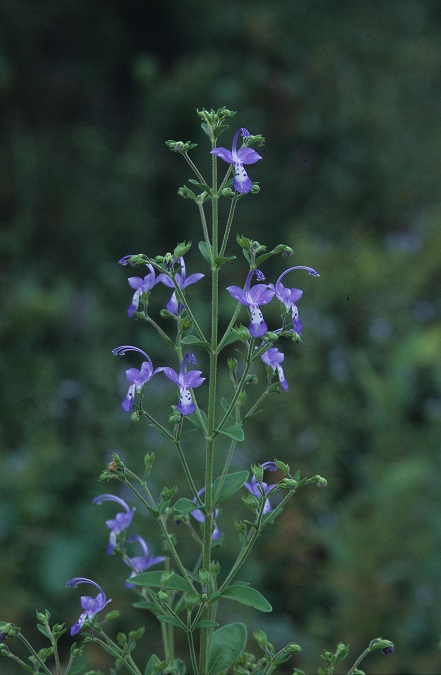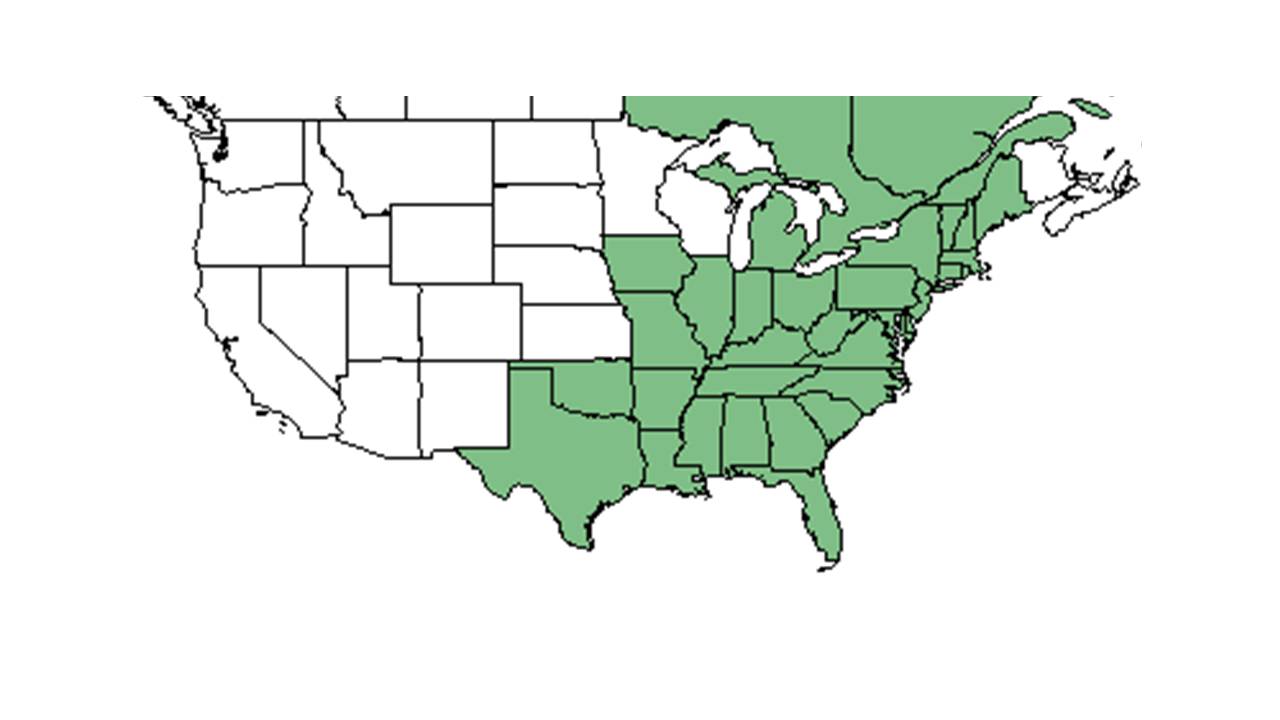Difference between revisions of "Trichostema dichotomum"
KatieMccoy (talk | contribs) |
KatieMccoy (talk | contribs) |
||
| Line 26: | Line 26: | ||
==Ecology== | ==Ecology== | ||
===Habitat=== <!--Natural communities, human disturbed habitats, topography, hydrology, soils, light, fire regime requirements for removal of competition, etc.--> | ===Habitat=== <!--Natural communities, human disturbed habitats, topography, hydrology, soils, light, fire regime requirements for removal of competition, etc.--> | ||
| − | + | In the Coastal Plain in Florida and Georgia, ''T. dichotomum'' has been found in burned upland pinewoods; longleaf pine forests; annually burned pine savannas; loamy sand of woodlands; loamy sand of open pine-hickory woods; floodplain forests; sandy loam along bluffs; amidst cypress knees on the shores of lakes and ponds; sandy ridges; burned pond pine shrub bog flatwoods; longleaf pine-turkey oak sand ridges; and at the edges of an open limestone glade (FSU Herbarium). It has been recorded in disturbed habitats such as roadsides; deciduous flatwoods clearings; and a mowed meadow. Associated species include ''Vaccinium stamineum, Trichostema setaceum, Scoparia, Panicum, Andropogon gerardii, Angelica dentata'', and ''Helianthus radula'' (FSU Herbarium). | |
===Phenology=== <!--Timing off flowering, fruiting, seed dispersal, and environmental triggers. Cite PanFlora website if appropriate: http://www.gilnelson.com/PanFlora/ --> | ===Phenology=== <!--Timing off flowering, fruiting, seed dispersal, and environmental triggers. Cite PanFlora website if appropriate: http://www.gilnelson.com/PanFlora/ --> | ||
Revision as of 19:20, 14 October 2015
| Trichostema dichotomum | |
|---|---|

| |
| Photo taken by Gil Nelson | |
| Scientific classification | |
| Kingdom: | Plantae |
| Division: | Magnoliophyta – Flowering plants |
| Class: | Magnoliopsida – Dicotyledons |
| Order: | Lamiales |
| Family: | Lamiaceae ⁄ Labiatae |
| Genus: | Trichostema |
| Species: | T. dichotomum |
| Binomial name | |
| Trichostema dichotomum L. | |

| |
| Natural range of Trichostema dichotomum from USDA NRCS Plants Database. | |
Common name: forked bluecurls
Contents
Taxonomic notes
Description
Distribution
Ecology
Habitat
In the Coastal Plain in Florida and Georgia, T. dichotomum has been found in burned upland pinewoods; longleaf pine forests; annually burned pine savannas; loamy sand of woodlands; loamy sand of open pine-hickory woods; floodplain forests; sandy loam along bluffs; amidst cypress knees on the shores of lakes and ponds; sandy ridges; burned pond pine shrub bog flatwoods; longleaf pine-turkey oak sand ridges; and at the edges of an open limestone glade (FSU Herbarium). It has been recorded in disturbed habitats such as roadsides; deciduous flatwoods clearings; and a mowed meadow. Associated species include Vaccinium stamineum, Trichostema setaceum, Scoparia, Panicum, Andropogon gerardii, Angelica dentata, and Helianthus radula (FSU Herbarium).
Phenology
Seed dispersal
Seed bank and germination
High light intensities and large diurnal temperature fluctuations as a result of the tortoise mounds are probably favorable for the establishment of T. dichotomum (Bazzaz 1979 cited by Kaczor and Hartnett 1990).
Fire ecology
Pollination
The following Hymenoptera families and species were observed visiting flowers of Trichostema dichotomum at Archbold Biological Station (Deyrup 2015):
Halictidae: Lasioglossum placidensis
Use by animals
It was found to be one of the most common spring recruits on recently abandoned tortoise mounds (Kaczor and Hartnett 1990). Deyrup (2012) observed the bees, Caupolicana electa and Dialictus placidensis, on T. dichotomum.
Diseases and parasites
Conservation and Management
Cultivation and restoration
Photo Gallery
References and notes
BAZZAZ, F. A. 1979. The physiological ecology of plant succession. Annu. Rev. Ecol. Syst., 10:351- 371.
Deyrup, M.A. and N.D. 2015. Database of observations of Hymenoptera visitations to flowers of plants on Archbold Biological Station, Florida, USA.
Deyrup, M. and L. Deyrup (2012). "The diversity of insects visiting flowers of saw palmetto (Arecaceae)." Florida Entomologist 95(3): 711-730.
Kaczor, S. A. and D. C. Hartnett (1990). "Gopher tortoise (gopherus polyphemus) effects on soils and vegetation in a Florida sandhill." American Midland Naturalist 123: 100-111.